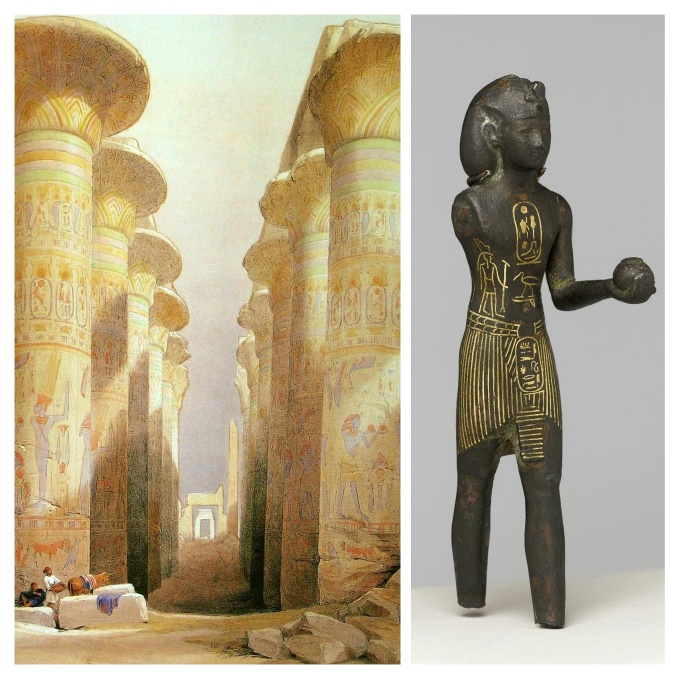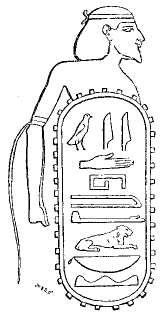
According to the Bible, King Solomon obtained 666 talents of gold (22,679 kilograms or 25 U.S tons) in one year! The Bible account says that the famously wise king, “…made the silver and in Jerusalem as plentiful as the stones.” (2 Chronicles 1:15) King Solomon was famous for his wealth in a way that his successors were not. Where did the immense wealth and treasure of King Solomon go? To Egypt! After the death of Solomon, his feckless and reckless son Rehoboam took the throne. Towards the end of his life, King Solomon became a shadow of the man he once. King Solomon the wise was a distant memory, what he had become was a king corrupted in heart and casually cruel and oppressive to his people. The people cried out for relief to their new king but rather than reduce their load, Rehoboam took the counsel of young, hot-headed agitators and decided to double-down on the cruelty declaring, “I will make your yoke heavier, and I will add to it. My father punished you with whips, but I will do so with scourges.” (2 Chronicles 10:11) The enraged people revolted causing the united kingdom to rupture, a division that would never heal. Thus Rehoboam lost 10 of the 12 tribes once ruled by the House of David.
Pharaoh Shishak
Shortly after the division of the kingdom, the new 2 tribe kingdom of Judah was invaded by the Egyptian Pharaoh Shishak. The much reduced kingdom had lost God’s protection and was unable to resist the Egyptian army. Pharaoh Shishak “…took the treasures of the house of Jehovah and the treasure of the king’s house. He took everything…” (2 Chronicles 12: 9). Shishak’s military campaign seems to be memorialized on a wall of the temple of

Fig. 1- From the Bubastite Portal. Notice that unlike the Egyptians, Hebrew males are depicted wearing a beard.
Amon-Ra in Karnak Egypt. The relief on the temple wall surrounding a gate (called the Bubastite Portal) records a series of cities in both Judah and Israel that were conquered by the Pharoah “Shoshenq”. This Pharoah is recognised by most historians as the Biblical Shishak. Every Judean or Israelite city is represented as a Hebrew slave with his arms bound behind him (Fig. 1). Although the Bible does not record the invasion of the northern ten-tribe kingdom it is evident from the temple wall that it occurred. A considerable number of the places on the temple wall can be identified with Biblical sites were located within the territory of the northern ten-tribe kingdom. This demonstrates that the purpose of Shishak’s campaign was, not to assist the ten-tribe kingdom to gain dominance over the southern two-tribe kingdom of Judah, but rather to regain control over important trade routes and thereby extend Egypt’s power and influence over both kingdoms.
Pharaoh Osorkon I
Shishak seems to have died shortly after his conquest and was replaced on the throne by his son Osorkon I (Upper right. Statuette of Osorkon at the Brooklyn Museum). Osorkon I’s reign is known for being both long and prosperous as evidenced by his many temple building or rebuilding projects. Less than a decade after Solomon’s death, Osorkon proudly recorded on a granite pillar in the Temple of Bubastis (not to be confused with the Bubastite Portal at the Temple of Amon-Ra in Karnak) that he had gifted to the many and various temples of Egypt at least 383 tons of silver and gold!
Where could Osorkon obtain such treasure so early into his reign? World renowned Egyptologist Kenneth Kitchen says that the most logical source was the treasure his father had looted from Jerusalem. Says Kitchen, “Barely five years earlier, Osorkon’s father Shishak had looted the wealth of Jerusalem. It seems unlikely to be a mere coincidence that almost immediately after that event Osorkon could dispose so freely of so much gold and silver. The vast amounts of Solomon’s golden wealth may have ended up, at least in part, as Osorkon’s gift to the gods and goddesses of Egypt.”*
This provides further corroboration that the Bible is not exaggerating the wealth of Solomon!
References:
*”Where Did Solomon’s Gold Go?'” by Kenneth Kitchen (May/June 1989) Biblical Archaeology Review.
Photo Credits:
Statuette photo credit Charles Edwin Wilbour Fund, Brooklyn Museum
Painting by David Roberts, c.1838 {{PD}} Wikimedia Commons
Egyptian Cartouche from the Bubastite Portal. {PD} Source: Wikimedia Commons
I have just read your writting the whereabouts of Solomon’s wealth and enjoyed it. Thank you
Fort Knox
I have read it’s a blesssing to know about the treasures of Solomon where they went after his reighn
I have read ever post and enjoyed it very much.
Keep on posting!